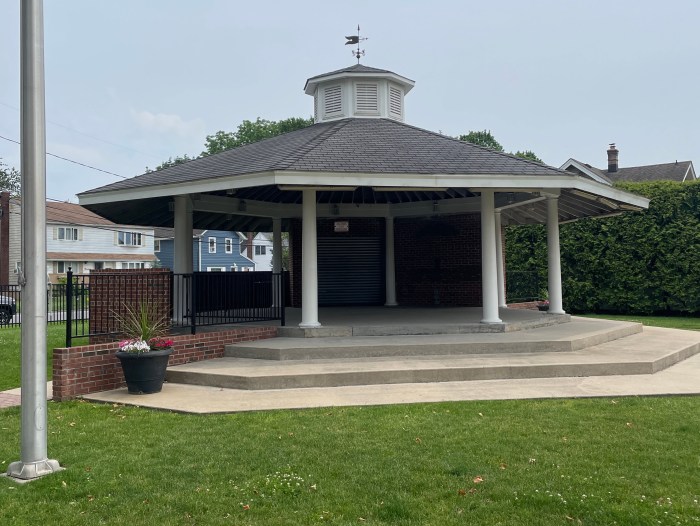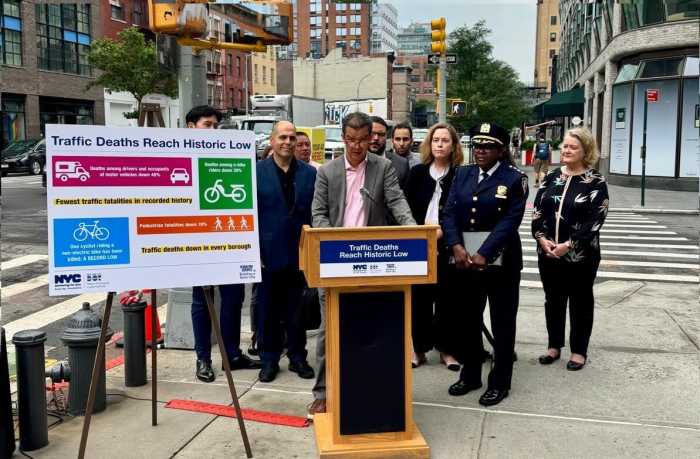It’s a cute little ‘bug.’ What it represents, however, is anything but cute.
An unusual-looking Volkswagen is toodling around Long Island this month. Painted to resemble the Asian longhorned beetle (ALB), the VW Beetle is part of efforts by the US Department of Agriculture to eliminate the pest, which can destroy 70 percent of an area’s tree canopy, according to the agency. Initially, officials held hope for complete eradication from about 23 square miles of LI designated as infested or at risk by 2016. Instead, this “landcape-altering pest” is spreading.
“In 2008 we had gone several years with no signs of Asian longhorned beetle,” explains Joseph Gittleman, who oversees the federal agency’s ALB eradication on Long Island. “Then in August 2013 we had a live sighting reported, and through further investigations found a large infestation outside the quarantine area.” Unfortunately, he adds, “It went undetected and unreported by anybody for six, seven years or more.”
In mid-April, the USDA put another 28 square miles of Long Island into the Asian longhorned beetle regulated area, more than doubling the land under quarantine. The bug seems to be spreading north along the Route 110 corridor and east/west along the Southern State Parkway, with big infestations at cemetaries such as St. Charles in Farmingdale and Mt. Ararat in Lindenhurst. The Massapequas, Bethpage, Wheatley Heights and Farmingdale are among the communities designated at risk.
“It’s a tremendous area to cover,” Gittleman says, “and our staffing is a lot thinner.” The agency has a staff of 48 to cover all of Long Island; they test high-risk locations, primarily mulch yards and industrial areas that receive imports from China. Gittleman says it’s not clear whether the expansion they’re seeing is a new infestation or an extension of the original one.
And no area is immune, as the current expansion demonstrates. It is easy to transport contaminated firewood or mulch unknowingly from infested areas to other parts of the island.
Officials are seeking the public’s help to ensure that doesn’t happen again. Late summer/early fall are the best time to spot the beetles; that’s when adults come out. You can also look for signs of their presence, such as exit holes or stuff they push out (photos). Gittleman encourages citizens who think they may have seen one to call it in, preferably after shooting a quick photo, although staff can usually tell if what you see is an ALB based on a phone conversation. Gittleman says most calls turn out to be local native beetles that look similar to the ALB. Don’t let that discourage you from calling at the slightest suspicion, as in this instance an ounce of prevention is worth more than a pound of tree bark. These bugs enjoy a range of hardwoods, including species of ash, plane tree, poplar, willow, birch, elm and even the sugar maple—our state tree. Also, if you live or work in the quarantine area, take care not to move wood of any kind to another part of the Island. The bugs may not be visible, but buried deep in the wood.
Otherwise, the primary solution is to remove trees—as of March 31 this year, 6,381 infested trees and more than 12,000 high-risk host trees have been taken down in New York state due to ALB concerns. The program is not using pesticides this year. Report sightings at http://asianlonghornedbeetle.com
And if you do spot an actual bug, kill it! They are harmless to humans. One LI homeowner recently reported one, but not before setting the little guy free to breed and eat more trees.
































